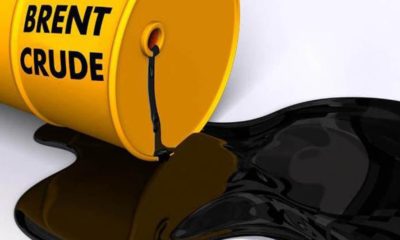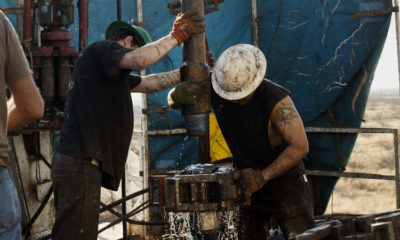A cocktail containing better US Q3 GDP data, along with positive omicron headlines further inoculated financial markets against a year-end sell-off overnight. Mostly, it was Scottish and Imperial College London’s studies that back up preliminary South African data, suggesting that omicron is far more contagious than delta, but much less likely to put you in hospital. Of course, with case numbers exploding across the world, the sheer volume of omicron cases means that for health systems, omicron could mathematically and statistically be a zero-sum game versus omicron.
Markets don’t concern themselves with these sorts of “slapping you in the face” details if the headlines agree with the narrative that they want to hear. Unsurprisingly in New York, therefore, equities powered higher along with oil, and the US Dollar staged a sharp retreat as defensive positioning was unwound, although the bond market was sharply unchanged. So, markets and investors will get their “Santa/Christmas rally” by the looks of it. On a personal level, it is the only question I have been asked all week. It has become so annoying that I have contemplated breaking wrapped Christmas presents and taking scissors to soft toys.
From here, we are probably going to need some more omicron headlines along the lines of hospitalisations and deaths soar with total cases to turn the markets from their perpetual, central bank QE-induced perpetual buy-the-dip in everything course. The data calendar in the US sees jobless claims, durable goods and personal spending and income released tonight, the last major dataset to be released globally for this year. It would take a serious negative divergence by the data to upset the applecart of bulls, and likely only temporarily.
Thereafter, we will be left to the tender mercies of omicron headlines until the new year, and even that potency now appears to be fading. Only Vladimir Putin deciding to holiday over the Ukrainian border changes that narrative. Think much lower equities, lower everything in Europe, $150 oil, a much higher Dollar and Swiss Franc with plunging treasury yields. But I don’t want to be the Grinch-ski who stole Christmas.
In Asia, the calendar today is dead with only Singapore Inflation for November to relieve the monotony. Higher than expected prints could put another tightening by the MAS back on the table and see local equity weakness. Otherwise, we are in a hurry-up-and-wait mode in Asia today.
Asian equities drift higher on sympathy trade.
Overnight, the buy-the-dip FOMO gnomes had another day in the sun on Wall Street, thanks to decent US GDP data and indications that omicron is less symptomatically aggressive. Record highs were in sight once again as the S&P 500 jumped 1.02%, the Nasdaq powered 1.18% higher, and the Dow Jones gained a healthy 0.74%. In Asia, futures on all three have maintained their gains, drifting around 0.10% higher today.
The overnight rally on Wall Street has dragged seemingly still reluctant markets in Asia higher today as well, with regional bourses still refusing to fully buy into the hype from the US. The Nikkei 225 is 0.10% higher, despite an upward revision to Japan’s 2022 GDP forecast by the government. South Korea’s Kospi is 0.35% higher.
In China, a lockdown of the city of Xian to combat a virus outbreak has had no noticeable impact on local equity markets, which are recording modest gains. The Shanghai Composite and CSI 300 have gained 0.20%. Hong Kong, meanwhile, has posted a somewhat healthier gain of 0.45%.
Singapore has shrugged of VTL restrictions to gain 0.25%, with Kuala Lumpur rising by 0.40%, and Taipei gaining 0.60%. Jakarta is 0.35% higher with Bangkok rising by 0.65% and Manila jumping 1.10% higher. Australian markets have also risen in sympathy, the ASX 200 and All Ordinaries gaining 0.35%.
That all set the scene for a modest rally in European markets this afternoon, although the UK’s CBI Monthly Growth Indicator, and UK Car Production released this morning, both disappointed and may cap sentiment in London this afternoon. It would take some huge downside misses from the US data dump this evening to unsettle what appears to be an inevitable Santa rally on Wall Street into the end of the week.
US Dollar falls hard on surging virus sentiment.
The US Dollar was in full retreat overnight, mostly due to reports that omicron presents fewer hospitalisation risks. That saw sentiment swing even more strongly back to the global recovery trade and saw the dollar index collapse by 0.37% to 96.12, easing still more in Asia to 96.03. I am adjusting my downside support level to 95.85 on the dollar index, where it has traced out a triple bottom. A daily close under 95.85 sets up a deeper US Dollar correction, potentially into January, assuming omicron remains a storm in a teacup in the minds of the investors globally.
EUR/USD rallied 0.40% to 1.1340 overnight, but still faces resistance above 1.1360. Only a move above 1.1400 suggests a medium-term low could be in place. GBP/USD shrugged on weaker Q3 GDP to leap 0.66% to 1.3350 after the US Prime Minster appeared to rule out more virus restrictions, despite cases hitting 100,000 per day yesterday. GBP/USD needs to recapture 1.3400 to signal a medium-term low. USD/JPY remains at 114.15 today, with no movement in US bond yields overnight meaning no movement in the currency pair.
The three risk-sentiment amigos, the CAD, AUD, and NZD all booked strong gains overnight between 0.65% for the CAD, and 0.85% for AUD. A rise above 0.7250 for AUD/USD and 0.6850 from NZD/USD will signal further rallies into the new year. USD/CAD is at 1.2850 this morning and needs to close below 1.2750 to signal the same.
Asian currencies despite a much weaker fixing once again from the PBOC for the Yuan versus the US Dollar. It highlights the challenges China has to weaken the Yuan, without incurring the ire of Washington DC, as their closed border means recycled Chinese offshore profits provide an underlying bid to the Yuan. Asian currencies rose on improving sentiment and a strong Yuan ignoring the PBOC signals, continues to provide support during Asian trading hours.
Another big rally for oil.
The omicron is not-as-bad-as-we-thought trade continued to push oil markets higher overnight, thanks to more studies seemingly confirming that thesis. A sharp drawdown in official US Crude Inventories, following the API drop the day before, further gave the fast-money gnomes an excuse to pile back into long positions.
Brent crude leapt 2.1% higher to $75.55 a barrel where it remains in Asia. WTI rallied by an impressive 2.45% to $73.00 a barrel, where it remains in Asia. Brent crude has carved through resistance at $74.45 which becomes initial support, with resistance at 76.90 a barrel, the 100-day moving average. (DMA) WTI is eroding resistance between $73.00 and $73.20 as we speak, which opens further gains to $74.10 initially, its 100-DMA. Support lies at $70.60 and then $70.00 a barrel.
The threat of OPEC+ action has receded dramatically now that Brent crude is back above $75.00 a barrel, with $80.00 a barrel being the sweet spot for the grouping, I believe. Oil’s direction is entirely reliant on omicron headlines, and as long as they stay more contagious but less virulent, oil’s rally is likely to continue, with intra-day ranges exacerbated by thin liquidity.
Gold rallies on weaker US Dollar.
Gold rallied overnight in a mechanical response to a much weaker US Dollar on currency markets. Gold finished 0.80% higher at $1803.60, with the range flattered by lower than average trading volumes. In Asia, gold has added another 0.10% to $1805.40 an ounce.
Gold’s attempts to stage a meaningful recovery remain unconvincing, with traders cutting long positions at the very first sign of trouble intra-day. Gold lacks the momentum, one way or another, to sustain a directional move up or down. That said, gold could extend its gains into the end of the weak if growth sentiment remains ascendant.
Gold has formed a rough double top around the $1815.00 region which will present a formidable barrier, ahead of $1840.00. Support lies at $1790.00, followed by $1780.00 an ounce. $1790.00 to $1815.00 continues to be my call for the range for the week.















